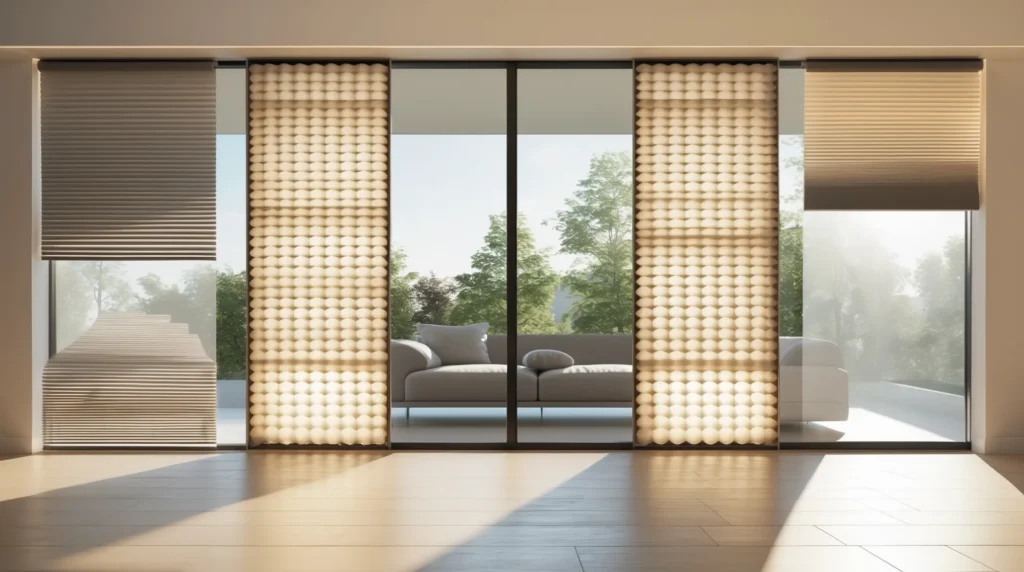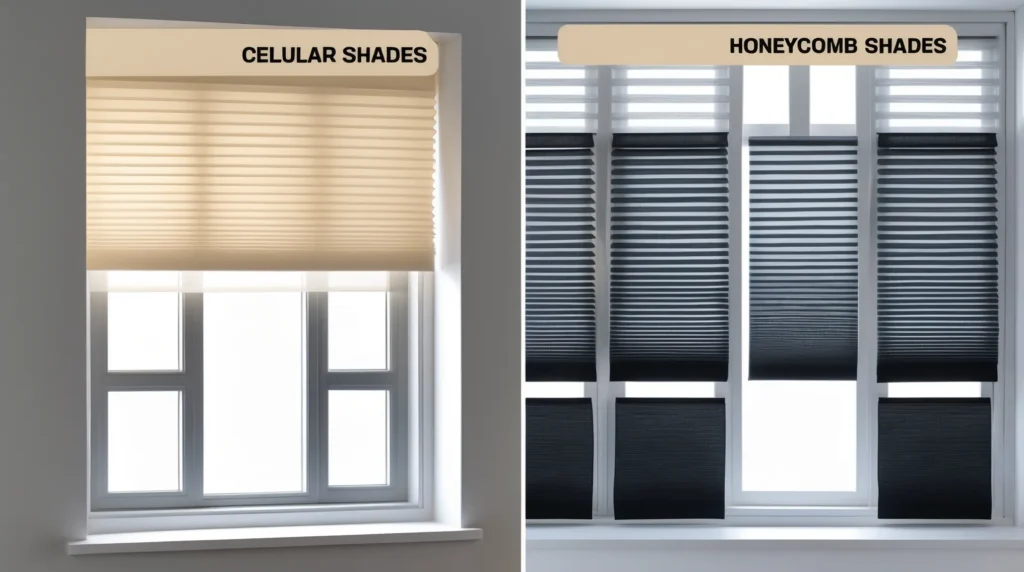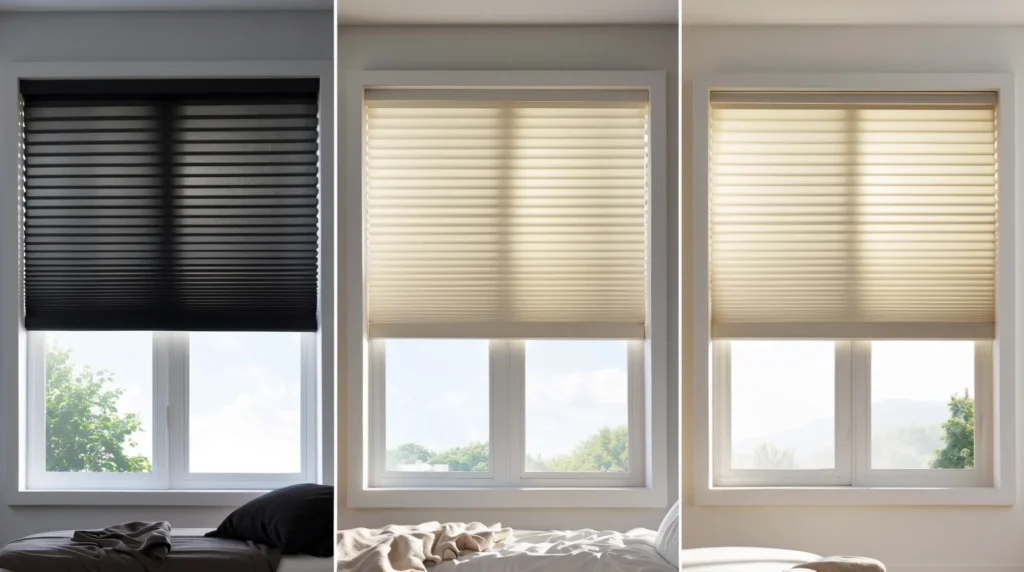Introduction to Modern Window Treatments
Windows do more than allow sunshine into your home they frame your space, connect indoors with outdoors, and create comfort when dressed well. For many homeowners, the challenge is finding window coverings that look beautiful yet also perform. From curtains to shutters to blinds, every option comes with benefits and drawbacks. But among these choices, honeycomb blinds have grown in popularity because of their unique design and energy efficiency.
Understanding the strengths and weaknesses of this option helps families make smarter choices. In this blog, we’ll explore honeycomb blinds pros and cons, discuss how they work, compare them to other treatments, and answer common questions homeowners often ask before buying.
What Are Honeycomb Blinds and Cellular Shades?
Honeycomb blinds, also known as cellular shades, are one of the most innovative window treatments available. Instead of flat fabric panels, they are built using layers of fabric that form pockets shaped like honeycombs. These hollow cells trap air inside, creating insulation between your window and living space.
When someone asks, what are cellular blinds or what is a cellular window shade, the answer is simple: they are stylish, flexible coverings designed to block light, save energy, and improve privacy. Unlike traditional blinds that tilt open and closed, honeycomb shades lift up and down while keeping a clean, modern look.
Homeowners often choose them because they fit many décor styles. They come in different colors, cell sizes, and lift options, from standard cords to cordless systems that improve safety in homes with children or pets. Some models even work with smart home technology, allowing shades to be raised or lowered with the touch of a button.
How Honeycomb Shades Work to Improve Comfort

The secret to honeycomb shades lies in their structure. Each shade is built from long sheets of fabric that are pleated and glued to form hexagon-shaped tubes. These tubes create air pockets much like double-paned windows that slow down the transfer of heat or cold.
During winter, the air pockets keep warm indoor air from escaping through the glass. In summer, they block outdoor heat from entering, keeping rooms cooler. This is why homeowners in climates with hot summers or cold winters often notice lower energy bills after switching to honeycomb shades.
Honeycomb shades also soften light. Unlike wood blinds, which cast hard shadows, these shades filter sunlight, creating a gentle glow. You can choose from light-filtering fabrics that let in daylight while protecting privacy or blackout fabrics that darken bedrooms for better sleep. The design also helps reduce outside noise, making them a smart pick for homes near busy streets.
Benefits of Cellular Shades in Everyday Living
When exploring window coverings, many homeowners want to know the benefits of cellular shades. The advantages are practical, aesthetic, and long-lasting.
- Energy Efficiency: Honeycomb shades act as insulation, keeping your home cooler in summer and warmer in winter. This can reduce your reliance on heating and cooling systems.
- Privacy and Light Control: With different fabric options, you can choose how much light enters a room. From sheer to blackout, there’s a shade for every need.
- Noise Reduction: The fabric layers and trapped air soften outside sounds, making rooms quieter.
- Style Variety: Honeycomb shades are available in many colors, textures, and designs, so they can complement almost any room.
- Safety: Cordless designs reduce hazards for kids and pets, making them a safer alternative to traditional blinds.
- Ease of Use: Lightweight and simple to operate, they’re convenient for daily living.
- Together, these qualities explain why honeycomb shades continue to be one of the most recommended window treatments on the market.
Honeycomb Blinds Pros and Cons Explained Clearly
While honeycomb blinds offer many positives, it’s important to weigh both sides. Like all window treatments, they have trade-offs.
Pros of Honeycomb Blinds:
- Energy Savings: Their honeycomb structure makes them one of the best insulating blinds available.
- Versatility: Choose from single-cell, double-cell, light-filtering, or blackout options.
- Quiet Comfort: They reduce noise pollution from outdoors.
- Modern Look: Sleek and stylish, they fit well in contemporary homes.
- Custom Fit: They can be made for wide, tall, or specialty windows.
Cons of Honeycomb Blinds:
- Higher Cost: They are often more expensive than basic blinds.
- Cleaning: Dust can collect inside the folds, making deep cleaning tricky.
- Durability Issues: While they last for years, rough use may damage the delicate fabric.
- Limited Style Options: Unlike curtains or drapes, they don’t offer layered designs.
For most families, the pros outweigh the cons, especially when energy efficiency and comfort are top priorities. But understanding the drawbacks ensures you know what to expect before investing.
Cellular Shades Pros and Cons Compared to Honeycomb Shades

One common question is whether there’s a difference between cellular shades pros and cons and honeycomb blinds. The truth is, they are the same product with two different names. “Cellular” describes the structure of the shade, while “honeycomb” describes how it looks.
Similarities:
- Both improve insulation with air-trapping pockets.
- Both come in light-filtering and blackout fabrics.
- Both are available in single-cell and double-cell designs.
Differences:
- Terminology: “Cellular” is often used in product descriptions, while “honeycomb” is a more consumer-friendly term.
- Market Use: Some brands prefer “cellular shades,” while others market them as “honeycomb shades.”
Essentially, cellular shades vs honeycomb is not really a competition it’s just two names for the same treatment. When shopping, you may find the wording varies depending on the retailer, but the functionality remains the same.
Are Cellular Shades Worth It for Your Home?
A question many homeowners ask is, are cellular shades worth it? The answer often depends on your goals. If saving money on energy bills, enjoying a quieter home, or adding a modern look are priorities, then yes they’re a smart investment.
For rooms that get extreme heat or cold, are double cell shades worth it? Absolutely. Double-cell options include two layers of honeycomb pockets instead of one. This doubles insulation, making them especially valuable for bedrooms, living rooms, or home offices.
Of course, you’ll pay a bit more for double-cell designs, but the extra cost can be balanced by long-term energy savings. Plus, they provide greater comfort, which is hard to put a price on. Most homeowners who choose cellular shades report strong satisfaction because they balance function with beauty.
Insulation and Energy Efficiency: Curtains or Honeycomb Blinds?
When choosing between insulated curtains or honeycomb blinds, it helps to think about how each option works. Curtains are heavy fabric panels that block drafts and sunlight. They can be effective, but they take up space and may not suit every décor style.
Insulated honeycomb blinds are more streamlined. They fit tightly inside window frames, leaving less space for heat to escape. This makes them a strong choice in homes where energy savings are important. They also look modern and can be installed in spaces where thick curtains would feel out of place.
Both treatments improve comfort, but blinds are often more practical in smaller rooms or minimalist designs. Many homeowners even use both combining curtains with honeycomb blinds for extra insulation and style.
Style and Light Control: From Blackout to Sheer Options

Another reason honeycomb shades remain popular is their flexibility with light control. If you want a cozy, dark bedroom, honeycomb blackout curtains or blackout honeycomb blinds are ideal. They block nearly all sunlight, creating the perfect setting for better sleep.
In other areas, you might want daylight without losing privacy. That’s where light-filtering fabrics shine. These shades allow a soft glow to fill the room while keeping neighbors from seeing inside. Some designs even combine both top-down, bottom-up shades give you the option to let in light from above while keeping privacy below.
This balance between style and practicality makes honeycomb shades fit any room. They’re available in neutral tones for minimalist homes, bold colors for modern spaces, and soft fabrics for traditional interiors. Whatever your preference, you can find a design that blends function with fashion.
Durability and Longevity: How Long Do Cellular Shades Last?
For many families, the big question is: how long do cellular shades last? With proper care, they typically last 7 to 10 years. That’s longer than many standard blinds but slightly shorter than heavy-duty shutters.
Much depends on how they’re used. Cordless options tend to last longer because they avoid the wear and tear of pulling cords. Likewise, motorized systems, while convenient, may require occasional battery or motor replacement.
Looking at cellular shade reviews, many homeowners praise their durability and reliability. They hold up well in everyday use and don’t warp like wood blinds or fade as quickly as some fabrics. While they may need occasional dusting, regular maintenance helps them stay in good condition for years.
Of course, no window covering lasts forever, but honeycomb shades balance lifespan with comfort, insulation, and style. This makes them a wise investment for anyone planning to stay in their home long-term.
Final Thoughts: Choosing Honeycomb Blinds in Pasadena, CA
When weighing your options for window coverings, honeycomb blinds offer a unique mix of benefits. They improve energy efficiency, reduce noise, and give you flexible light control all while fitting neatly into your window frames. The honeycomb blinds pros and cons are worth considering, but in most cases, the advantages outweigh the drawbacks.
While they may cost more than basic blinds, the savings on heating and cooling bills can make up the difference. Plus, they add beauty and comfort to any space. At keystone group, we recommend honeycomb shades for families who want both performance and style. With single-cell and double-cell designs, blackout or light-filtering fabrics, and cordless or motorized systems, you can find the perfect fit for your needs.
If you’re ready to explore honeycomb shades for your home, contact keystone group today to schedule a consultation. We’ll help you find the best solution for comfort, energy savings, and lasting style.
Upgrade your windows with the style and comfort of honeycomb shades. Discover the perfect fit for your home and enjoy the benefits today reach out now to get started.
